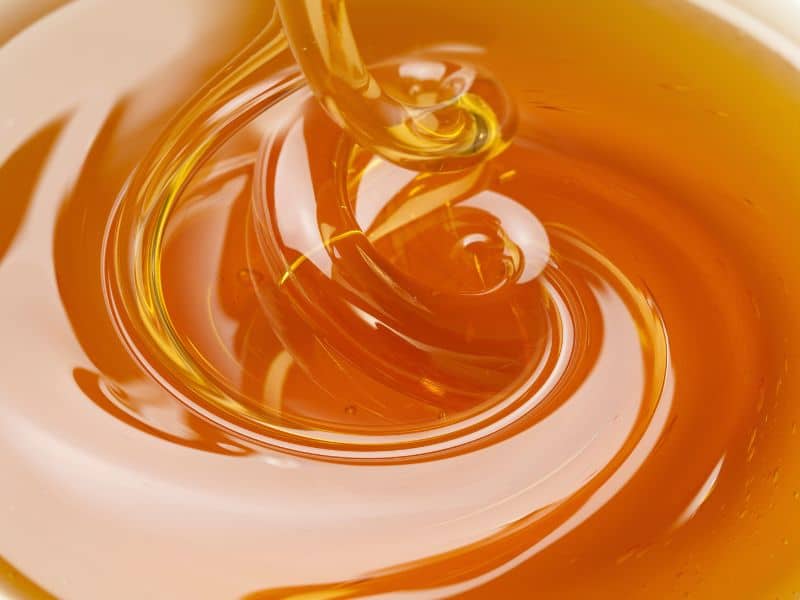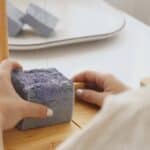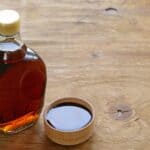Combining the natural moisturizing properties of honey with the simplicity of a melt and pour soap base, this homemade treat offers numerous benefits for your skin. Learn about choosing the right honey, mixing it into the soap base, and uncovering the optimal honey-to-soap ratio for a luxurious lather. So, how much honey to add to melt and pour soap?
Add one tablespoon of honey per pound (16 ounces) of melt and pour soap base to achieve a mild lather with nourishing skin benefits. Customize the honey quantity based on your personal preference, skin type, and desired soap characteristics.
Experimenting with the honey-to-soap ratio allows you to create a soap that perfectly suits your needs. Increasing honey content enhances moisturizing properties, while reducing it results in more lather.
Always remember to thoroughly mix honey into the melted soap base to ensure even distribution and a consistent final product. Enjoy the process of crafting your own honey-infused soap and reap the numerous benefits it offers for your skin.
Let’s take a closer look at adding honey to melt and pour soap and its benefits.
Materials and Tools Needed
Start your honey soap journey with a melt and pour soap base, which is beginner-friendly and easily customizable. Opt for glycerin or shea butter soap bases, available at craft stores or online retailers.
Select high-quality honey for your soap, as it directly impacts the final product. Raw, organic honey is ideal, but if unavailable, choose a pure, minimally processed honey.
Accurate measuring tools like spoons, cups, and a kitchen scale ensure you add the right amounts of honey and other ingredients. Consistency is key for a well-balanced soap.
Gently melt the soap base using a microwave or a double boiler. Heat in short intervals and stir frequently to avoid overheating and compromising the soap’s quality.
Use a silicone spatula or a stainless-steel spoon to thoroughly mix honey into the melted soap base. Proper stirring ensures even distribution and a consistent final product.
Honey to Soap Base Ratio
For a mild lather and balanced honey benefits, use a ratio of one tablespoon of honey per pound (16 ounces) of soap base. This combination provides a smooth texture with nourishing properties.
Increasing the honey amount enhances moisturizing effects but may decrease lather. On the other hand, using less honey results in more lather but fewer skin benefits. Experiment to strike the right balance for your needs.
Customize the honey quantity based on your personal preference and skin type. For a richer, more moisturizing soap, increase the honey. If you desire a lighter, more lathering soap, reduce the honey content. The key is to create a soap that you love and enjoy using.
Selecting the Ideal Honey
Choose honey based on its origin, such as mild-flavored clover, dark and robust buckwheat, or manuka with potent antibacterial properties. Each variety influences your soap’s attributes and skin benefits.
Opt for raw, unprocessed, and organic honey to ensure maximum nutrients and skin-enhancing properties. Avoid products with additives, sugars, or synthetic components that may dilute honey’s benefits.
If honey isn’t an option, use agave nectar or maple syrup as substitutes. These natural sweeteners share similar characteristics but may cause minor changes in your soap’s texture and shade.
Combining Honey with Melted Soap
Melt the soap base using a microwave or double boiler. Employ 20-30 second intervals, stirring between each to prevent excessive heat or damage to the base’s composition.
After melting the soap base, introduce the pre-measured honey. Thoroughly blend the ingredients with a silicone spatula or stainless-steel spoon, ensuring a homogenous mixture free of streaks.
Stir the mixture consistently to disperse honey uniformly, achieving a cohesive texture and evenly distributed benefits throughout the final soap product.
Addressing Common Honey Problems
Avoiding Honey Separation
To prevent separation, incorporate honey into the soap base when it reaches approximately 120°F. If separation transpires, reheat the mixture gently, stirring thoroughly before pouring into molds.
Resolving Too-Soft Soap
For a firmer soap, allow it to harden longer in the mold or include 1-2% stearic acid or beeswax in the mixture to increase solidity.
Enhancing Lather
To improve lather, reduce honey content or introduce 1-2% castor oil as a natural lathering agent. Experiment with ingredient ratios to attain your ideal lather quality and consistency.
Benefits of Honey for Skin
Moisturizing Properties
Honey is a natural humectant, meaning it attracts and retains moisture. This helps hydrate and nourish the skin, leaving it soft, supple, and radiant.
Antioxidant Effects
Rich in antioxidants, honey combats free radicals that cause premature aging. By neutralizing these harmful molecules, honey helps maintain a youthful appearance and improve skin elasticity.
Antibacterial Qualities
Honey boasts antibacterial properties, making it effective against acne-causing bacteria. Incorporating honey into soap helps cleanse and heal the skin while reducing inflammation and redness.
Storing and Using Honey Soap
Proper Storage Techniques
Store honey soap in a cool, dry place away from direct sunlight. Use a soap dish with drainage to prevent moisture buildup, which can cause the soap to soften and dissolve prematurely.
Tips for Using Honey Soap
Wet the soap and work it into a lather between your hands. Apply the lather to your skin, gently massaging it in circular motions. Rinse thoroughly with lukewarm water, then pat your skin dry.
Shelf Life Considerations
While honey soap can last a long time if stored correctly, it’s best to use it within 6-12 months for optimal benefits. Over time, the soap’s potency and effectiveness may decrease, so enjoy your handmade soap while it’s fresh.
Alternatives To Honey For Soap Making
While honey’s unique properties make it a popular choice for soap-making, there are other natural sweeteners that can be used as substitutes if you prefer or if honey isn’t available. Let’s explore some popular alternatives that can still provide an array of benefits for your skin.
Agave Nectar
Derived from the agave plant, agave nectar is a vegan-friendly alternative to honey. Its humectant properties help retain moisture, ensuring well-hydrated skin. Although it lacks honey’s antibacterial qualities, agave nectar still imparts a gentle, soothing effect on the skin.
Maple Syrup
Maple syrup, derived from the sap of maple trees, is another natural sweetener option for soap-making. It boasts antioxidant properties and helps moisturize the skin. Maple syrup also adds a subtle, warm aroma to the soap, providing a pleasant scent. Keep in mind that the color of maple syrup might affect the soap’s final appearance, potentially creating a darker hue.
Aloe Vera Gel
Aloe vera gel is another option to consider as an alternative to honey. Known for its soothing and healing properties, aloe vera gel can help calm irritated skin and promote a healthy complexion. Incorporate aloe vera gel into your soap for a refreshing and hydrating experience.
When choosing an alternative to honey, consider the specific properties and benefits you’d like to achieve with your soap. Each alternative brings its own unique attributes, allowing you to create a soap that meets your personal preferences and skincare needs.
Frequently Asked Questions
Answer: Add one tablespoon of honey per pound (16 ounces) of melt and pour soap base for a gentle lather and balanced skin benefits.
Honey offers moisturizing, antioxidant, and antibacterial benefits for the skin, making it an ideal ingredient for soap-making.
To fix a too-soft soap, let it harden longer in the mold or add 1-2% stearic acid or beeswax to the mixture for increased firmness.
To enhance lather, reduce honey content or add 1-2% castor oil as a natural lathering agent. Adjust ingredient ratios to achieve your desired lather consistency.
While honey soap can last a long time if stored correctly, it’s best to use it within 6-12 months for optimal benefits, as its potency and effectiveness may decrease over time.
Conclusion
In conclusion, crafting your own honey-infused melt and pour soap is a rewarding and enjoyable experience that allows you to harness the natural benefits of honey for your skin. By understanding the right honey to choose, the optimal honey-to-soap ratio, and proper storage techniques, you can create a luxurious, skin-nourishing soap tailored to your preferences.






